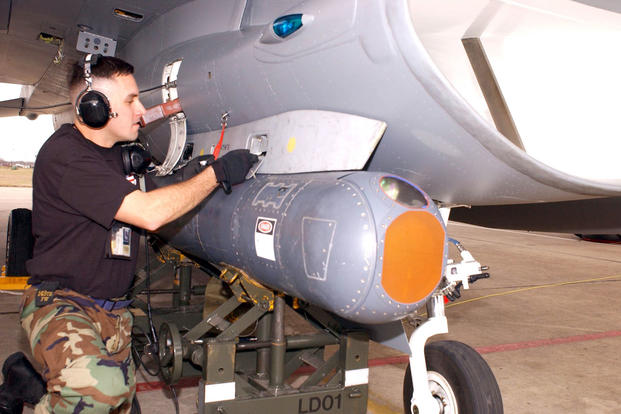(Source: www.military.com) – Next-gen electro-optical tracking sensor could help avoid friendly fire target accidents
There may soon be a new infrared detection sensor on the market that can better scrutinize friendly forces on the ground and shrink the time it takes to identify targets of opportunity.
UTC Aerospace System is testing its next-generation short-wave infrared (SWIR) camera sensor, which it says is capable of seeing laser strobes in real time and can be incorporated into various ground, sea and air platforms, company officials recently told Military.com.
The system — already deployed with U.S. military testing units — is a multi-mode tracking SWIR sensor, said Tara Martin, director of business development for UTC Aerospace Systems, ISR and Space Systems.
“We’re amongst the first companies offering that, and that will be reaching the field in the next two to three years,” she said.
UTC first and foremost developed the sensor “to prevent fratricide,” Martin said. Secondary goals are “reducing talk on target” and promoting covert communication.
“When people are just talking onto target, there have been instances where, because of their different perspectives, they’re not actually talking about the same target,” she said.
That could lead to confusion, or an incorrect target description.
One such case occurred June 9, 2014 when a B-1B Lancer on station in Afghanistan responded to a team under fire from the Taliban. But instead of hitting the enemy, the aircraft dropped two 500-pound bombs on five U.S. soldiers and one Afghan soldier. The soldiers, including two Green Berets, died in the accident.
(…)
How It Works
UTC Aerospace Systems has a broad portfolio of SWIR sensors, from custom or modified models to off-the-shelf items, ready to deploy as a service or customer needs, Martin said.
The difference between a low-light TV sensor, a standard way of picking up infrared markings, and the multi-mode tracking SWIR sensor is the wavelengths of light that can be seen, she explained.
“Low-light sensors generally see up to around 1 micron. Shortwave infrared goes up to 1.7 microns, and why that’s important is there’s a few key wavelengths that lasers tend to [present themselves] in military platforms,” Martin said.
(…)
Who Wants It
According to Sensors Unlimited, the SWIR capability can be deployed on targeting pods and satellites and used for laser spotting, weapons guiding, and maritime and submarine surveillance, among other missions.
When asked which U.S. military services are looking to use the SWIR sensor, Martin said, “All of the above.”
“In [U.S. Special Operations Command], things are bought and deployed immediately, which is some of our customer base,” she said.
(…)
READ FULL ARTICLE >>> https://www.military.com/defensetech/2018/08/30/next-gen-tracking-sensor-could-help-avoid-friendly-fire-accidents.html
Photo >>> Mike Arellano, USAF as published in ibid









